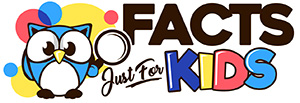
- Name: Chromium
- Symbol: Cr
- Atomic Number: 24
- Atomic Weight: 51.9961 u
- Period: 4
- Group: 6
28 Chromium Facts for Kids
- Chromium is a chemical element on the periodic table.
- Chromium is a hard and brittle metal.
- Chromium has a lustrous steel-grey color in its pure form.
- The symbol for chromium is Cr.
- The atomic number for chromium is 24.
- The standard atomic weight for chromium is 51.9961 u.
- Chromium is a solid at room temperature.
- Chromium is in the transition metal element category on the periodic table.
- Chromium is a period 4 chemical element, which is the fourth row on the periodic table.
- Chromium is a group 6 chemical element, which is the chromium group.
- Chromium is in in the d-block on the periodic table of elements.
- The electron configuration for chromium is [Ar] 3d5 4s1.
- The electrons per shell for chromium are 2, 8, 13, 1.
- Chromium has three known stable isotopes.
- The three known stable isotopes for chromium are 52Cr, 53Cr and 54Cr.
- The most abundant chromium stable isotope is 52Cr.
- The melting point for chromium is 3,465 °F (1,907 °C).
- The boiling point for chromium is 4,840 °F (2,671 °C).
- In 1974, French chemist Louis Nicolas Vauquelin first isolated chromium and is considered the person who discovered it.
- Chromium is the 21st most abundant element found in the Earth’s crust.
- The most important ore for chromium production is chromite.
- In 2013, the worldwide production of chromium was over 31 million tons.
- The largest producer of chromium in the world is South Africa.
- Most of the chromium produced annually is used to make metal alloys.
- Chromium is used to create stainless steel, which is a metal alloy that is corrosion-resistant.
- Chromium is used in chrome plating, which is the thin coating of metal used for decorating and corrosion resistance.
- The compound chromium(III) oxide (Cr2O3) is used to polish metal.
- The compound chromic acid is used to clean laboratory glassware and to remove all traces of organic material.
Additional Resources on the Chemical Element Chromium
- Chromium – Learn more about the chemical element chromium on the U.S. National Library of Medicine website.
- Chromium (Cr) – Discover more facts about chromium on the Royal Society of Chemistry website.
- Chromium – Wikipedia – Find more chromium facts on the Wikipedia website.
